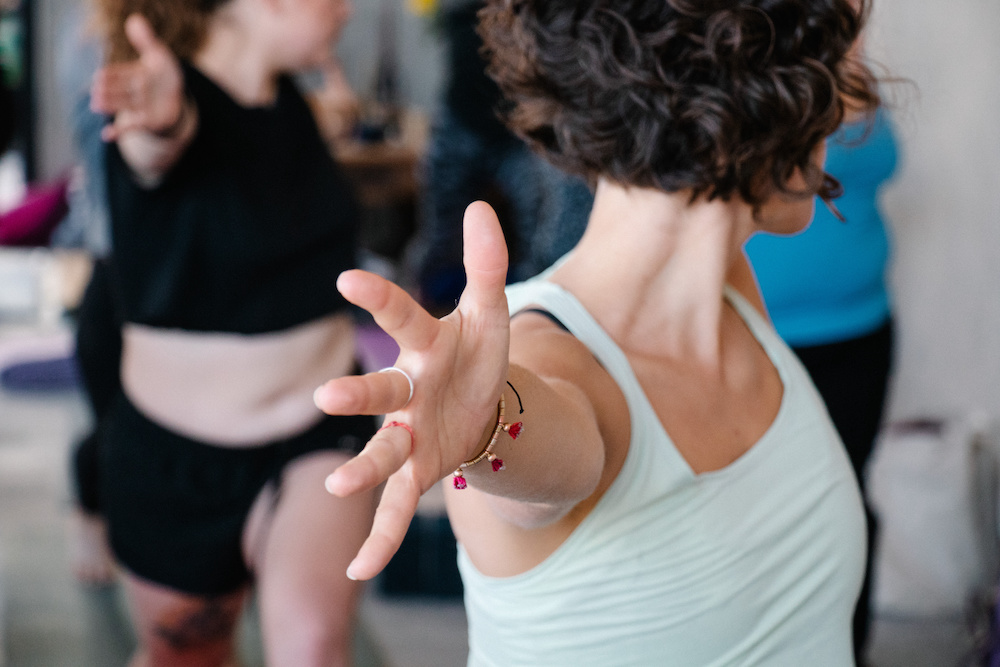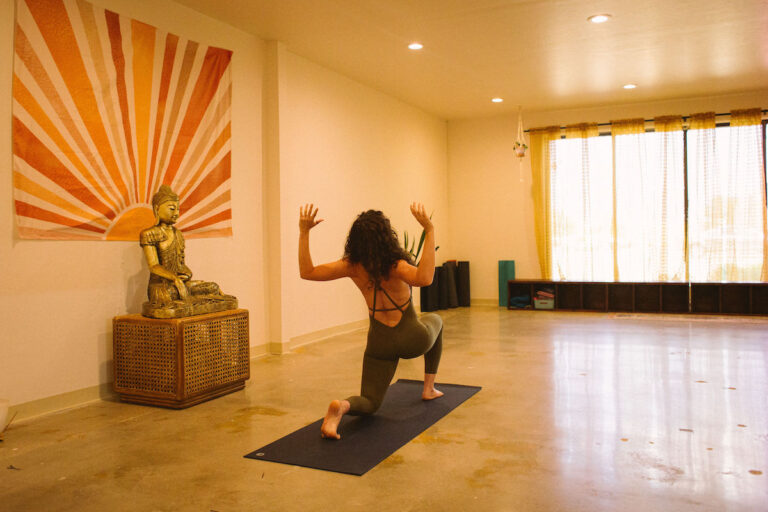In the realm of yoga, there exists a multitude of styles, each offering its unique approach to physical and mental well-being.
What is Vinyasa Yoga?
Vinyasa Yoga stands out as a dynamic and invigorating form that emphasizes the seamless flow of movement and breath. Rooted in ancient yogic traditions, Vinyasa Yoga has evolved into a popular and accessible practice that promotes strength, flexibility, mindfulness, and spiritual connection.
The Origins of Vinyasa Yoga
We can trace the Vinyasa Yoga lineage to classical Indian Yoga philosophy, which dates back thousands of years. The word “Vinyasa” can be roughly translated from Sanskrit to mean “to place in a special way.” This concept underscores the fundamental principle of Vinyasa Yoga: the sequential and intentional arrangement of poses, linked together by breath.
Vinyasa Yoga was popularized in the West in the mid-20th century by influential Yoga teachers such as Sri K. Pattabhi Jois and T. Krishnamacharya. Jois, in particular, is credited with creating Ashtanga Vinyasa Yoga, a rigorous and structured form of Vinyasa Yoga that includes a specific series of postures and sequences.
The Principles of Vinyasa Yoga
At the heart of Vinyasa Yoga lies the synchronization of breath and movement. Practitioners engage in a flowing sequence of poses, moving through each posture with an inhale or exhale, fostering a sense of rhythm and grace. This continuous flow not only builds heat and vitality in the body, but also cultivates mindfulness and presence.
The structure of a Vinyasa class varies but generally consists of a warm-up, a series of Sun Salutations, a main sequence of asanas (poses), and a cool-down period that includes stretching and relaxation. The fluidity of transitions between poses is a hallmark of Vinyasa Yoga, challenging practitioners to find balance and concentration amid movement.
The Benefits of Vinyasa Yoga
Vinyasa Yoga offers a multitude of physical, mental, and emotional benefits, making it a favorite of Yoga enthusiasts. Here are some of the advantages you can expect to gain from a regular Vinyasa practice:
- Improved Flexibility and Strength: The dynamic nature of Vinyasa Yoga helps increase flexibility as you move through various poses. It also builds strength, especially in the core and upper body, as you support yourself during transitions and postures.
- Stress Reduction: The mindful breathing and fluid movements in Vinyasa Yoga help reduce stress and anxiety. Practicing mindfulness in motion can lead to a deep state of relaxation.
- Enhanced Cardiovascular Health: The continuous flow of Vinyasa Yoga increases heart rate and circulation, improving cardiovascular health. It can also aid in metabolism and weight management.
- Mental Clarity: Vinyasa Yoga encourages mental focus and concentration. The synchronization of breath and movement fosters a meditative state that clears the mind and enhances mental clarity.
- Spiritual Connection: For some practitioners, Vinyasa Yoga provides a spiritual dimension by connecting the physical and mental aspects of the practice. It can be a path to self-discovery and self-realization.
- Creativity and Self-Expression: The fluid nature of Vinyasa Yoga allows for creative sequencing and self-expression. As you become more experienced, you can personalize it to suit your needs and goals.
Is Vinyasa Yoga Right for You?
Suitable for all levels; just keep in mind that the pace of this style is more fluid that other styles of yoga. If you’re new to yoga, consider starting with a more foundational practice, such as Hatha or Iyengar, to build a strong yoga foundation before exploring the flowing sequences of Vinyasa.
Whether you seek physical strength, mental clarity, or a deeper spiritual connection, Vinyasa Yoga can be a powerful tool on your journey to holistic well-being. So, roll out your mat, take a deep breath, and flow into the world of Vinyasa Yoga, where balance and harmony await.
Come try it for yourself at The Yoga Box. Schedule your complementary tour today.







